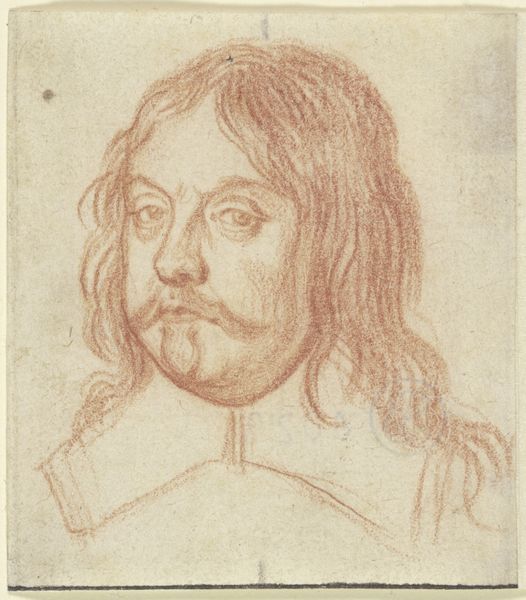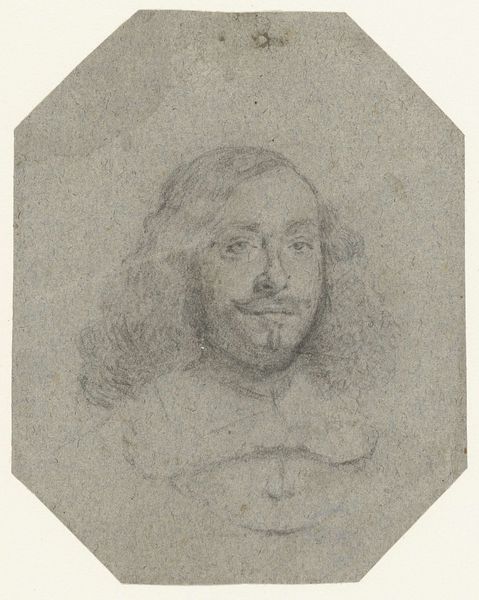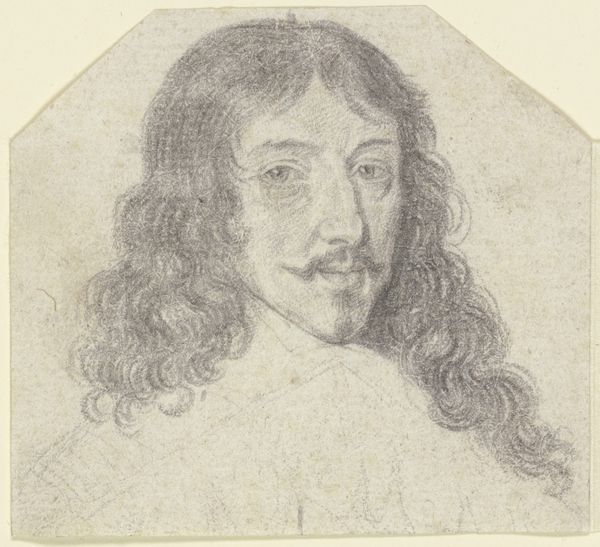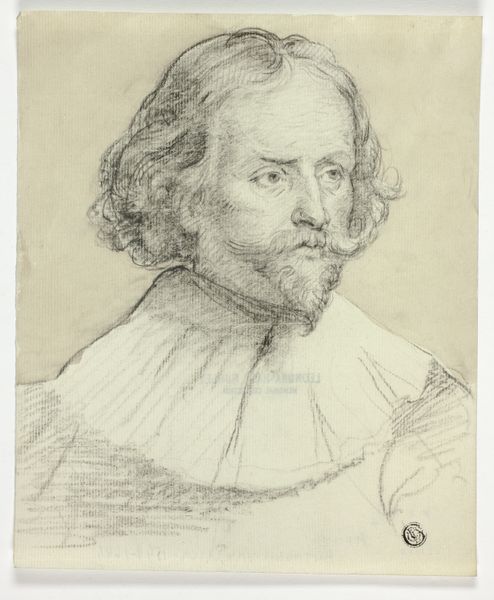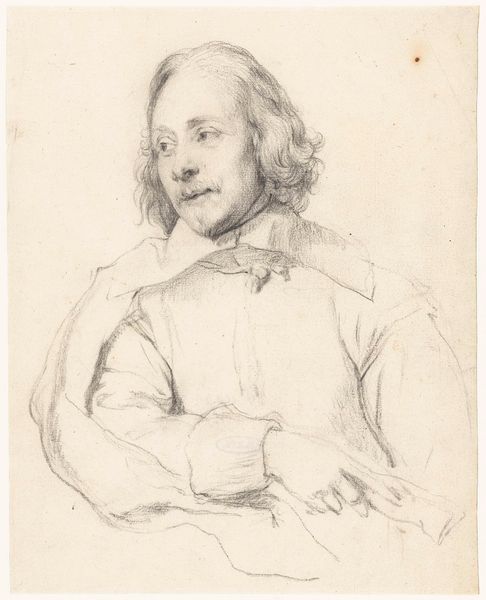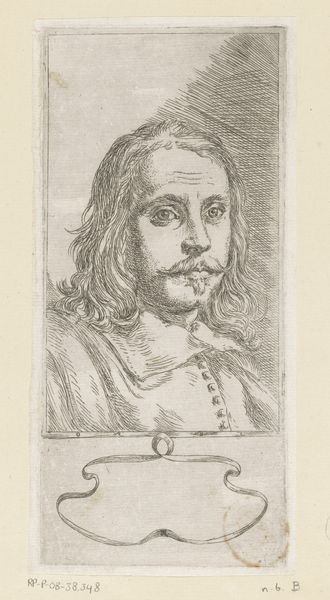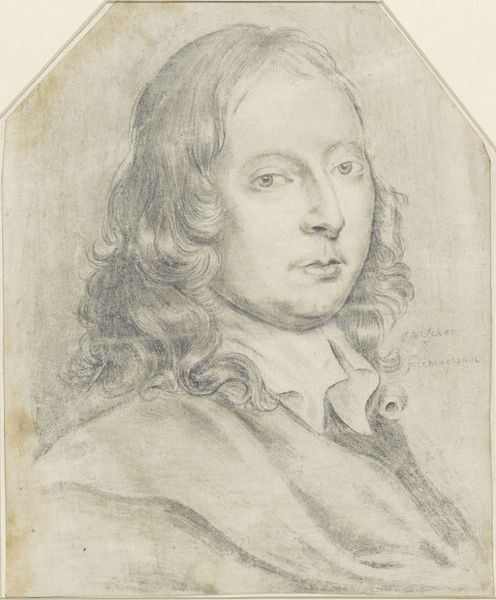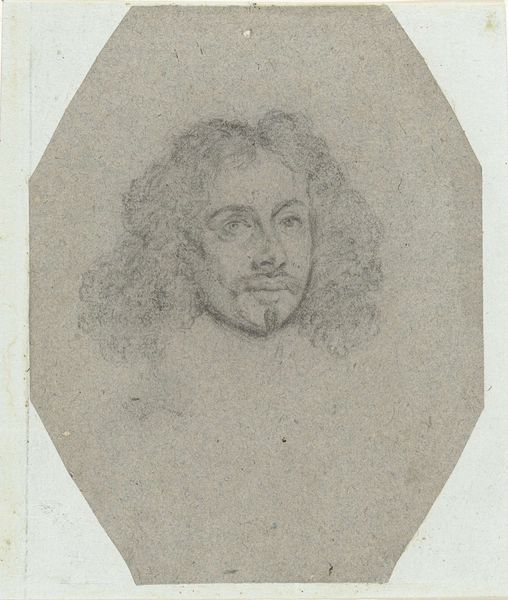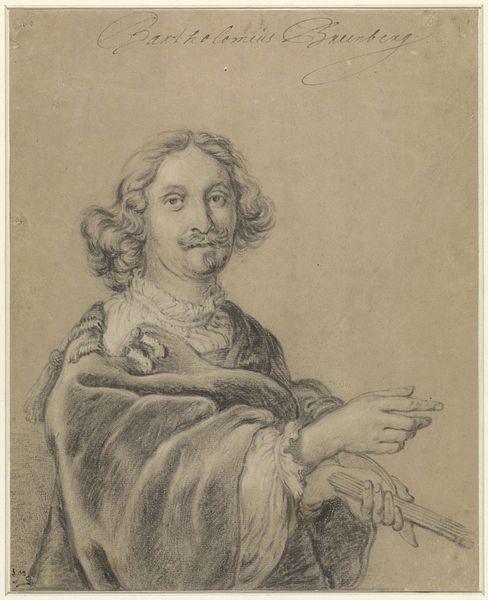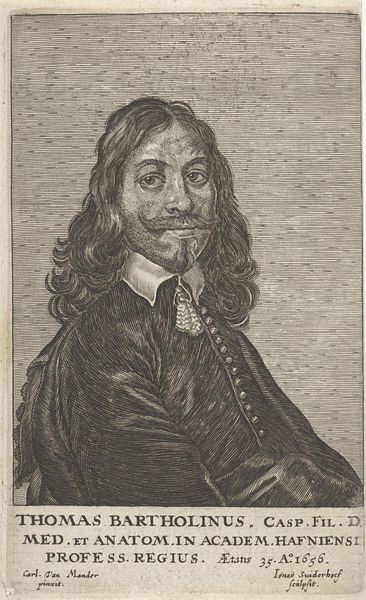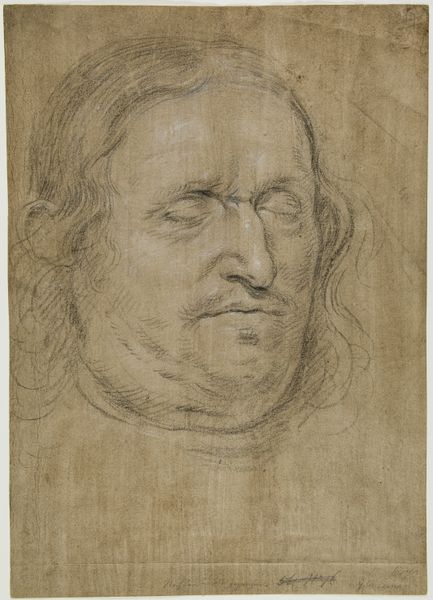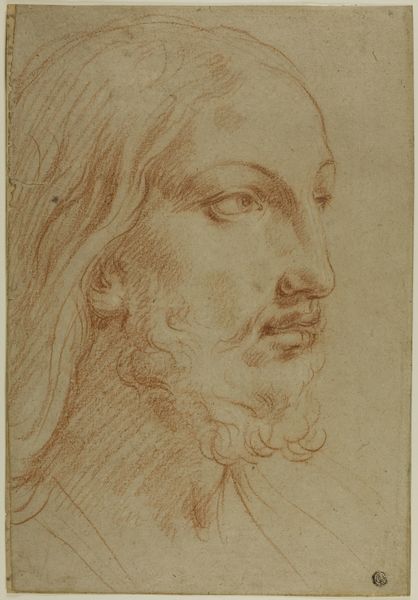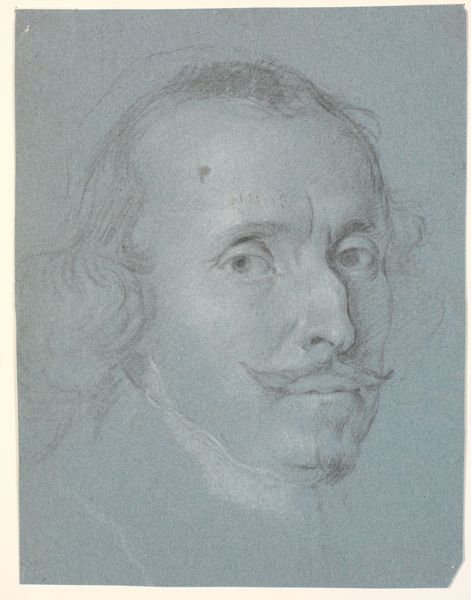
drawing, paper, pencil, chalk
#
portrait
#
drawing
#
baroque
#
paper
#
sketch
#
pencil
#
chalk
Copyright: Public Domain
Curator: The delicate strokes of chalk and pencil in Robert Nanteuil’s "Portrait des Kardinal Mazarin," currently residing at the Städel Museum, immediately convey a sense of quiet introspection. What's your take, Editor? Editor: It's remarkably simple in its making, almost rudimentary, but powerful. You can really see the texture of the paper coming through; it reminds you of its material reality as a common support for sketches like this. Curator: Absolutely. And considering Mazarin's significant role as a cardinal and statesman in 17th-century France, it begs the question: what narrative choices were made by Nanteuil? It lacks the usual opulent adornments associated with power, choosing instead to offer an almost vulnerable depiction of the man. Editor: Perhaps the point was less about portraying authority and more about the physical act of representation. How does the weight of the chalk, the scratching of the pencil impact the overall work? It's interesting to note the minimal application, isn’t it? Not excessive, and perhaps constrained by access to these specific materials at the time. Curator: Indeed, this stripped-down aesthetic directs us to confront the socio-political elements that underpinned Mazarin’s identity. Is the work, in effect, highlighting and maybe subverting his role as the embodiment of autocratic power by presenting him as something rather accessible? Editor: The act of sketching is key, especially when it captures figures of power. We see a rapid production, a means of dissemination of images across a pre-photographic world that shapes how power is manufactured and perceived. And who was it manufactured for? Was it strictly for elites? Curator: I agree. We have to consider the audiences engaging with prints based on sketches such as this. These portrait sketches challenge and negotiate visibility, offering a somewhat unfiltered view that intersects with complex societal perceptions around faith, class, and influence. Editor: Precisely! It compels us to consider the labor involved, and the consumption by a specific, expanding social stratum. It’s really fascinating to peel back those layers of meaning inherent in the artistic and social framework of the time. Curator: This piece encourages us to actively rethink art’s relationship to politics and cultural representation. Editor: Yes. It urges me to dig deeper into the actual means through which such power was not only imagined, but produced and circulated within society through printed images.
Comments
No comments
Be the first to comment and join the conversation on the ultimate creative platform.
